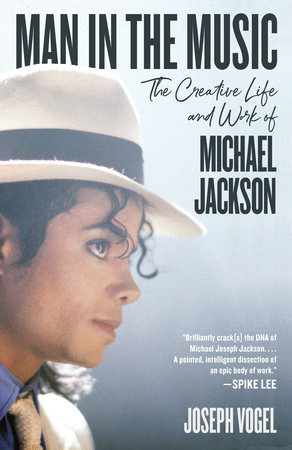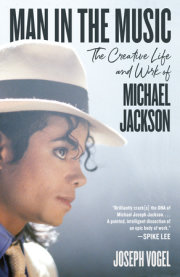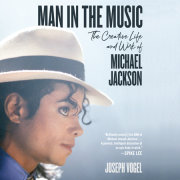“THIS BASSLINE CREPT OVER ME”
Since recording didn’t officially commence with Quincy Jones and the A- Team until 1982, the year 1981 is generally not included in accounts of
Thriller. But it should be. Long before sessions commenced at Westlake Studio, Jackson was quietly working on new material by himself. Quincy Jones hadn’t yet heard most of these songs. The producer and much of the A- Team were still in the middle of production on Donna Summer’s next album, which would continue through the rest of the year.
But Michael wasn’t wasting time. In a tape recording from that year, he can be heard dictating the structure of a new song. “Let the song create itself,” he reminds himself. “Let the strings tell you what to do, where they should come. Let the piano tell you what chords to hit, whatever it feels. Let the bass tell you what it should be doing. Everything. Let it create itself. Let it form. Let it do what it wants to do. Don’t force upon the song; let the song force upon you. Let it tell you where to go.” Then he works out the various parts of the song: the melody, the verses, the chorus, the bridge; he hums the strings and beatboxes the rhythm.
The song was “The Girl Is Mine.” He wanted a song with a great melody, in part because he wanted a song like that on his album, but also because of who would be singing the song with him: Paul McCartney. Jackson further developed the track at his home studio and Allen Zentz Studios before revealing it to McCartney that December.
McCartney wasn’t the only legend with whom Jackson was collaborating at the time. It is hard to overstate how hot and in- demand the artist was in the year leading up to
Thriller. Steven Spielberg wanted to work with him. Andy Warhol wanted to interview him. Diana Ross (his one- time mentor) wanted him to write a song for her (Jackson complied with “Muscles,” which became a Top 10 hit for Ross in 1982).
Meanwhile, Jackson continued to churn out demos for his own album. According to Quincy Jones, the artist was “writing music like a machine” during this period. He typically dictated song ideas into a tape recorder (as with “The Girl Is Mine”) first, inventing beats and rhythms, imitating instruments, and humming melodies. Then he would flesh out the song further in the studio, sometimes with musicians or engineers or sometimes with the assistance of his sisters or brothers.
That fall Jackson was listening to Hall & Oates’s new song, “I Can’t Go for That (No Can Do),” when inspiration struck. He couldn’t get that simple, stark drumbeat and moody bass line out of his head. He wanted to write something similar but distinct, “and a few days later,” he recalled, “this bass line and this melody crept over me.”
The song was “Billie Jean.” Years later, during the recording of “We Are the World,” Jackson told Hall & Oates that their bass line on “I Can’t Go for That” inspired his biggest hit. They were surprised by the revelation, as the songs are very different, but flattered nonetheless and graciously complimented him on what he’d done with it.
Jackson continued to work on “Billie Jean” for months. He knew he had something special and was determined to translate what he was hearing in his head as precisely as possible. He was so consumed by it that, as legend has it, he hardly noticed when his Rolls- Royce caught fire on his way home from the studio one day. Recording engineer Nelson Hayes was driving as Jackson sat in the back, wearing headphones. They had just pulled off the Ventura freeway in Los Angeles when a motorcyclist motioned to roll down the window and pointed to the hood. Smoke was coming out. Hayes pulled off to the side of the road and evacuated the vehicle, but Jackson remained so absorbed in the song he hardly processed what was happening. “Even while we were getting help and finding an alternate way to get where we were going,” Jackson recalled in his autobiography, “I was silently composing additional material.”
The 1981 “Billie Jean” demo offers insight into Jackson’s evolving abilities as a songwriter. The lyrics aren’t all there yet, and the chorus is in a different key. But all the main ingredients— the drum machine, the bass line, the verses, even the strings and guitar parts— were in place before he ever brought it to Quincy Jones and Bruce Swedien. And this was only the first iteration. As the song evolved, Jackson brought in several musicians to help bring the song to life: Tom Perry (who had worked on
Triumph) helped handle the engineering; Bill Wolfer played keyboard; Greg Phillinganes provided the original bass on a Minimoog synthesizer; and Jerry Hey contributed the synthesized strings. Jackson, meanwhile, played orchestrator and director, fleshed out the lyrics, and polished his vocals.
This was his process for all the songs he wrote for
Thriller. On the 1981 demo for “Wanna Be Startin’ Somethin’,” the arrangement, instrumentation, and lyrics were mostly in place. The trademark shouts (“
yeah yeah”) and interjections (“
hee haw”) were there, as were the culminating chant (“
ma ma se ma ma sa ma ma coo sa”).
Jackson worked on a number of other quality songs, in the pre- Westlake period, that didn’t make the album. He wrote the original “P.Y.T.”— a smooth, mid- tempo track he developed with Greg Phillinganes. That song was later replaced by a completely different, more up- tempo “P.Y.T.,” created by James Ingram. Another song, “Got the Hots,” was a funky rhythm track with smooth harmonies. “I loved that one,” said Jackson, “[but] Quincy and Rod didn’t think it was good enough. I thought it was wonderful.”
The artist was also excited about a song called “Behind the Mask.” The futuristic, synth- colored piece came from the Japanese electronic group Yellow Magic Orchestra (YMO). Jackson modified the track, writing his own lyrics, creating a new melody and vocal arrangement, and giving the song a traditional verse- chorus structure. The result was a striking synth- pop cut that would have undoubtedly made the album, and likely been a hit. Unfortunately, even though an agreement about songwriting credits and royalties was signed, the song was not used on
Thriller due to creative disagreements (a decision YMO later regretted).
Jackson’s interest in the song, however, showed his desire to branch outside of traditional pop and R&B and experiment with cutting- edge sounds. While not widely known in the United States at the time, YMO were pioneers in the use of synthesizers, drum machines, and sequencers. Their sound and futuristic presentation had a big influence on technopop, cyberpunk, and new wave. Jackson was into numerous other avant-garde artists at the time, including Kraftwerk and Grace Jones. “Once I was out at Michael’s studio on Hayvenhurst,” recalled recording engineer Russ Ragsdale, “and I was going through a stack of vinyl records sitting by the console. One of the records I came across was Grace Jones’s
Nightclubbing. I picked it up to look at it front and back and Michael got kind of excited about it too. He took the record from me and asked if I’d like to hear a song that was very influential to him, and I thought,
Are you kidding? Yes, please! He put on a song called ‘Feel Up’ from that record and I about fell over!” ________ __________________ __________
Copyright © 2019 by Joseph Vogel. All rights reserved. No part of this excerpt may be reproduced or reprinted without permission in writing from the publisher.






